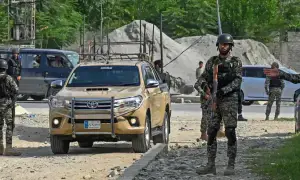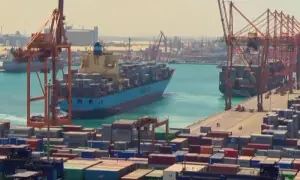How capacity charges make you pay for electricity you never use
An emergency meeting under caretaker Prime Minister Anwaar ul Haq Kakar was called on Sunday to discuss why people are so fed up with their electricity bills and what can be done to fix it.
While the meeting was told that the practice of free electricity for government officials was being discontinued and over 60% of consumers were unaffected by hikes in the cost of electricity, the meeting led to a far more dangerous revelation.
Power officials told the caretaker PM that payments of Rs2 trillion (or Rs2,000 billion) were due next year in lieu of capacity charges. Consumers will continue to bleed money for electricity they never use.
What are these capacity charges
So what are these capacity charges?
Facing the never ending chase between supply and demand that forms the root of Pakistan’s energy woes, successive governments in the country decided that more electricity was needed. So they installed a lot of new electricity plants across the country, many as Independent Power Producers (IPP).
Power plants are massive investments, and those who set them up wanted guarantees that they were not throwing money down a hole that would not provide ample returns. So they made Power Purchase Agreements with the government to fix how they would be compensated.
The agreements determined that the capacity payments would be based on costs of land purchase, design, installation, taxes, insurance, administration, debt servicing and return on equity.
The really brilliant (or worrying) part is that the agreements are fixed against things that fluctuate including the exchange rate and interest rates.
However, in typical Pakistani fashion, decision makers went a little too far with what they did without building the requisite systems. The idea was that there should be more than enough supply of electricity. But they did not stop to consider that there should be enough capacity for the electricity to be transmitted as well.
The result is that Pakistan has the capacity to produce more electricity than it needs. But it has no way to get that electricity to consumers.
However, the capacity charges for the plants still apply and have to be paid.
So basically, even if an IPP have the capacity to produce 100 megawatts of electricity and it only produces 60 mw due to transmission constraints, it will still get paid for all 100 mw.
This means that just because an agreement was signed, there are plants that can produce a lot of electricity. And even though consumers need the electricity, they will never receive it because there aren’t enough systems to transmit all of it. Meanwhile, because the plant has the capacity to make that electricity, consumers will have to keep paying for them.
Why capacity charges continue to increase
And as exchange and interest rates continue to rise, users will pay more and more in these capacity charges. But you will probably still not get that electricity.
A December 2022 estimate that capacity charges came to Rs8 per kilowatts hour or unit. The interest rate has gone up since then and rupee depreciated.
In 2018, Pakistan paid Rs500 million in capacity charges and the amount has been increasing constantly since then. So, as the caretaker PM was told the county would be paying a whopping Rs2,000 billion nex year.
For the latest news, follow us on Twitter @Aaj_Urdu. We are also on Facebook, Instagram and YouTube.
















Comments are closed on this story.